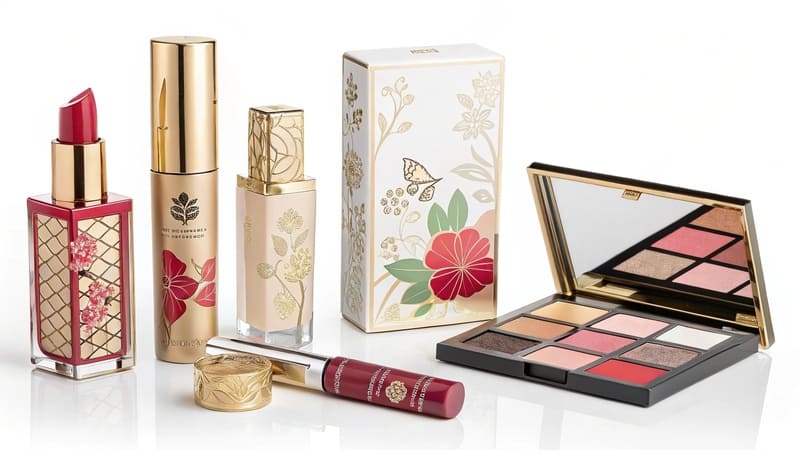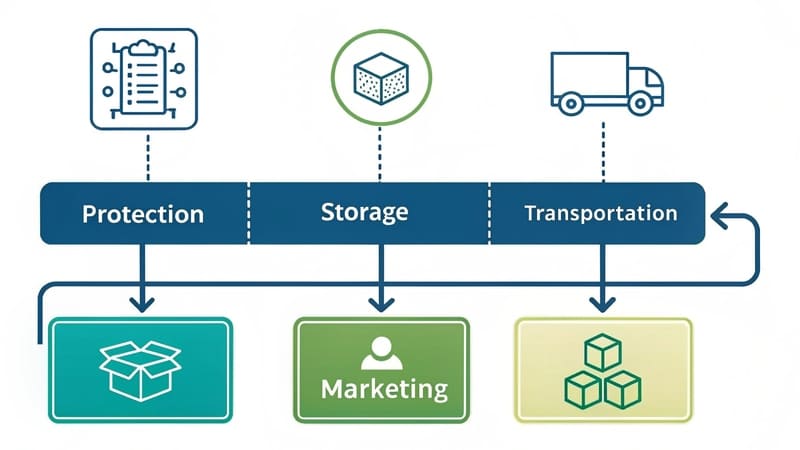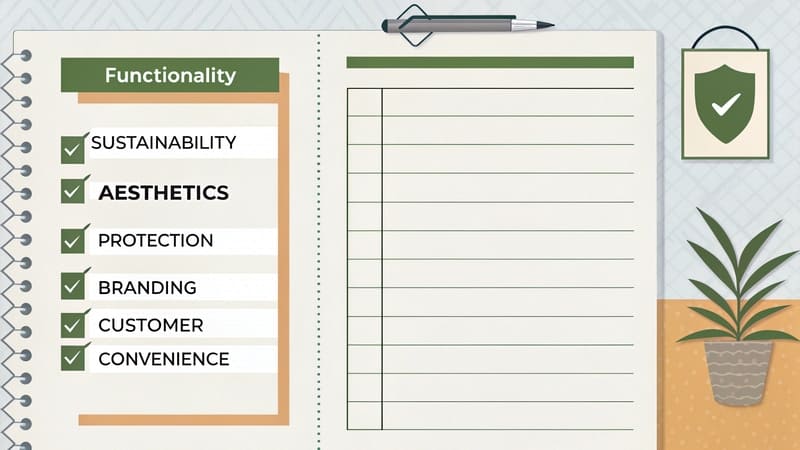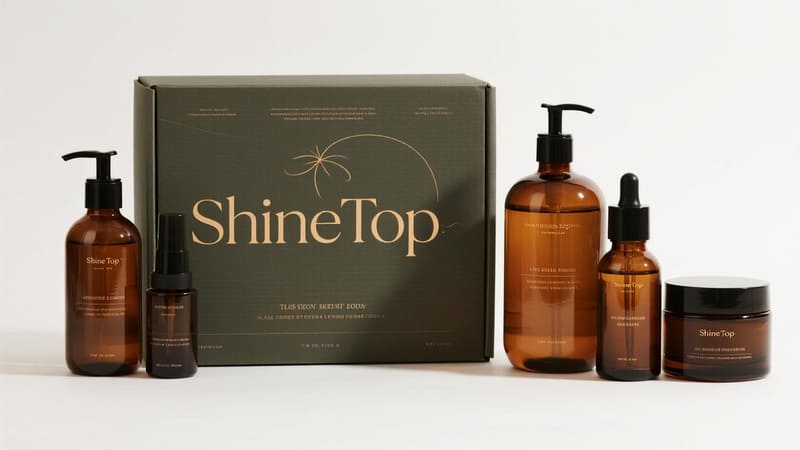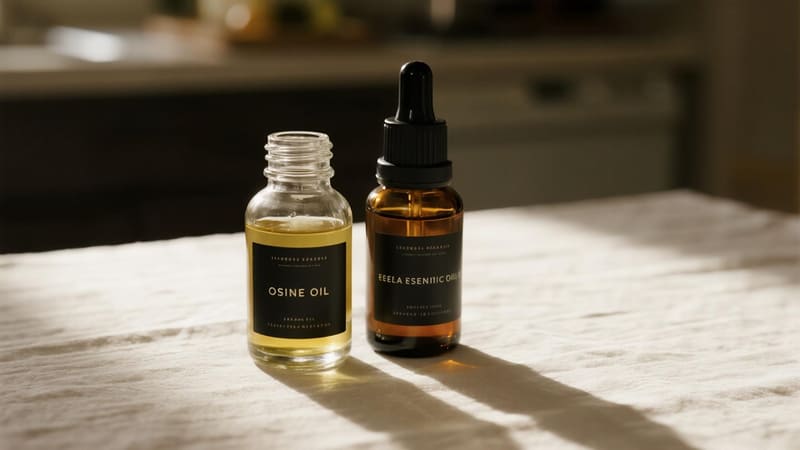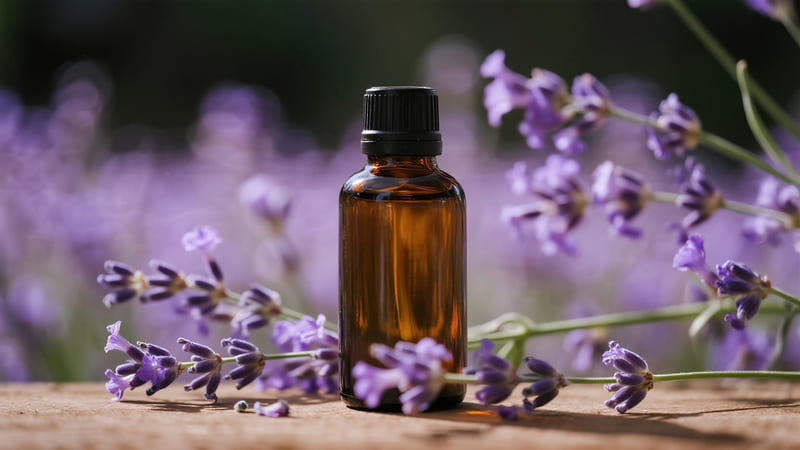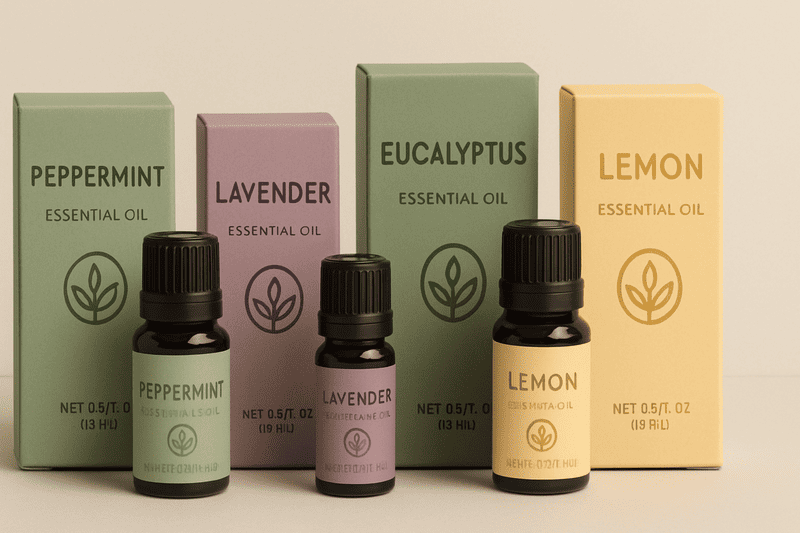Dull packaging gets lost on crowded shelves. Your amazing product might never get noticed by customers. Great design makes your brand stand out and grab attention.
Design in cosmetic packaging is crucial. It attracts customers, communicates brand identity, protects the product, and provides essential information. This significantly influences purchasing decisions and overall brand success.
Design is much more than just making a product look pretty. It’s a silent salesperson working for your brand 24/7. In my 20 years at ShineTop, I’ve seen how smart design can transform a cosmetic product’s journey from the shelf to the customer’s home. Let’s explore how design truly shapes the success of cosmetic packaging.
What is the Role of Design in Packaging?
Generic packaging fails to connect with consumers. Your product blends in with countless others, missing valuable sales opportunities. Thoughtful design gives your packaging a powerful voice and a distinct personality.
The role of design in packaging is to attract attention, communicate product benefits and brand values, ensure functionality, and ultimately drive sales by creating a positive and memorable user experience.
Design is a fundamental part of packaging. It’s not just decoration. It serves several key roles that are vital for any product, especially in the competitive cosmetics market. I always tell my clients that good design works hard for their brand.
Key Roles of Packaging Design
-
Attraction (The First Impression):
The first job of packaging design is to catch the consumer’s eye. On a crowded retail shelf or a busy webpage, your product has only a few seconds to make an impression. Colors, shapes, and overall visual appeal are critical here. A striking design can make someone stop and look closer. -
Communication (The Silent Storyteller):
Packaging design tells your brand’s story. It communicates what the product is, who it’s for, and what makes it special. This includes the brand logo, product name, key benefits, and sometimes even the brand’s values (e.g., "natural" or "luxurious"). For example, Mohammed, a client from Iraq, uses specific design elements on his custom spice and soap packaging to convey a sense of premium quality and tradition. -
Functionality (The Practical Purpose):
Design also covers how well the packaging works. Is it easy to open? Does it protect the product inside? Can the consumer get the product out easily? Good functional design enhances the user experience. -
Differentiation (Standing Out from the Crowd):
In a saturated market, your packaging design needs to set your product apart from competitors. Unique structural designs, innovative materials, or distinctive graphics can create a memorable identity.
Here’s how these roles impact your brand:
| Role Element | Impact on Consumer/Brand |
|---|---|
| Attraction | Grabs initial interest, encourages further investigation. |
| Communication | Builds brand recognition, informs purchase decisions. |
| Functionality | Ensures product usability, leads to customer satisfaction. |
| Differentiation | Creates a memorable brand, can justify a premium price. |
I’ve seen brands completely revitalize their sales simply by investing in a packaging redesign that better fulfilled these roles. It’s about making that crucial connection with the potential buyer.
What are the 4 Elements of Packaging Design?
Unfocused design can confuse potential buyers. If the elements don’t work together, your message gets lost, and sales can suffer. Understanding the key elements helps create a cohesive and impactful design.
The four key elements of packaging design are typically visuals (graphics, color, imagery), form (shape, size, material), typography (font style, hierarchy), and information (product details, branding, legal text).
When we at ShineTop design packaging, we focus on how these core elements work together. Each one plays a vital part in the overall success of the design. Getting them right is essential.
Breaking Down the Core Elements
-
Visuals (Graphics, Color, Imagery):
This is often what people notice first.- Color: Colors evoke emotions and associations. For example, green often suggests natural or eco-friendly, while gold can imply luxury.
- Imagery & Graphics: These can be photographs, illustrations, patterns, or abstract designs. They help convey the product’s essence or target audience.
- Finish: The surface treatment, like matte, gloss, metallic, or soft-touch, adds to the tactile and visual experience.
-
Form (Shape, Size, Material):
This refers to the physical structure of the packaging.- Shape & Size: A unique shape can make a product stand out. The size should be appropriate for the product volume and convenient for the user.
- Material: The choice of material (glass, plastic, metal, paper) affects the perceived quality, durability, and sustainability. The texture of the material is also part of the form.
-
Typography (Font Style, Hierarchy):
The way text is presented is crucial.- Font Choice: Different fonts have different personalities. A delicate script might suit a luxury perfume, while a clean sans-serif could be for a modern skincare line.
- Hierarchy: This involves using different font sizes, weights, and styles to guide the reader’s eye to the most important information first (e.g., brand name, then product name, then benefits).
-
Information (Content & Clarity):
This includes all the text on the package.- Brand Name & Logo: These must be clearly visible and recognizable.
- Product Name & Description: Tells the consumer what the product is and does.
- Usage Instructions, Ingredients, Warnings: This information must be legible and meet legal requirements.
Here’s how these elements contribute:
| Element | Contribution to Overall Design | Example in Cosmetics |
|---|---|---|
| Visuals | Attracts attention, sets the mood, conveys brand personality. | Vibrant floral patterns for a botanical-themed brand. |
| Form | Defines physical presence, influences user interaction, signals quality. | A heavy, uniquely shaped glass jar for a premium cream. |
| Typography | Communicates brand voice, ensures readability of key information. | Elegant serif fonts for a classic luxury brand. |
| Information | Educates the consumer, builds trust, meets legal obligations. | Clear, easy-to-read ingredient list and usage directions. |
Anna, a cosmetics manufacturer in Thailand, pays close attention to these elements for her brand. She ensures her logo is prominent and that the typography clearly communicates the natural benefits of her products.
What are the 5 Functions of Package Design?
Thinking of packaging as just a container misses its huge potential. If you do that, you’re underutilizing a powerful marketing tool that’s right in your hands. Effective design serves multiple crucial functions for your product.
The five main functions of package design are: containment (holding the product), protection (safeguarding it), convenience (ease of use), communication (information and branding), and promotion (attracting buyers).
Package design is a workhorse. It has to do many jobs at once. Understanding these functions helps us create packaging that not only looks good but also performs exceptionally well.
The Multifaceted Functions Explained
-
Containment:
This is the most basic function. The packaging must securely hold the product, preventing leaks, spills, or loss. For cosmetics, this means containing liquids, creams, powders, or solids effectively. -
Protection:
Packaging must protect the product from physical damage (like breakage during shipping), environmental factors (like light, moisture, or air that can degrade sensitive ingredients), and contamination. This is vital for maintaining product quality and shelf life. -
Convenience:
This relates to how easy the packaging is to handle, open, use, reseal (if applicable), and store. For cosmetics, this includes features like easy-to-use pumps, sprays, droppers, or well-designed jar openings. Good convenience enhances the customer’s experience. -
Communication:
Packaging is a key communication tool.- Information: It provides essential details like the product name, brand, ingredients, net weight, usage instructions, and any warnings. This helps consumers make informed choices and use the product safely.
- Branding: It conveys the brand’s identity, personality, and values through logos, colors, and overall design style.
-
Promotion (Marketing):
Packaging acts as a "silent salesperson."- Shelf Appeal: It needs to attract attention and stand out from competitors on the shelf or online.
- Persuasion: The design can create desire and persuade the consumer to purchase the product by conveying quality, benefits, or a particular lifestyle.
Here’s why these functions are important for cosmetics:
| Function | Why It’s Important for Cosmetics |
|---|---|
| Containment | Prevents loss of valuable formulas, ensures product integrity. |
| Protection | Preserves sensitive active ingredients, extends shelf life, ensures safety. |
| Convenience | Enhances user experience, encourages repeat purchase, allows proper dosage. |
| Communication | Builds consumer trust, informs choices, meets legal labeling requirements. |
| Promotion | Drives sales in a competitive market, creates brand desire and loyalty. |
When we design packaging for clients like Mohammed, who creates custom gift sets, we consider all these functions. The glass bottle for his product must be protected, the set must be convenient to open, and the overall design must promote the luxury feel his customer wants.
What are the Important Four Considerations in Packaging Design?
Overlooking key factors can lead to packaging that is ineffective or problematic. Your design might look good on a computer screen but fail in the real world. Considering vital aspects from the start ensures successful packaging.
Four important considerations in packaging design are: the target audience, brand identity, product characteristics (e.g., fragility, formulation), and budget/production constraints. Increasingly, sustainability is a fifth critical consideration.
Before a single line is drawn for a new package design, we at ShineTop always discuss these crucial considerations with our clients. They form the foundation for a design that truly works.
Essential Design Considerations
-
Target Audience:
Who are you trying to reach? Understanding their demographics (age, gender, income), psychographics (lifestyle, values), and preferences is key. A design that appeals to a Gen Z consumer might be very different from one targeting mature, affluent women. -
Brand Identity:
The packaging must be a true reflection of your brand. It should be consistent with your overall brand image, messaging, and values. Is your brand about luxury, simplicity, nature, science, or fun? The design must convey this. -
Product Characteristics:
The nature of the cosmetic product itself heavily influences design choices.- Formulation: Is it a liquid, cream, powder, or solid? Is it sensitive to light, air, or temperature?
- Protection Needs: Does it require an airtight seal, UV protection, or specific barrier properties?
- Dispensing Method: How will the user access the product (pump, spray, dropper, jar, tube)?
-
Budget and Production:
Practical realities always play a role.- Material Costs: Some materials are more expensive than others.
- Manufacturing Complexity: Intricate designs or special finishes can increase production costs and time.
- Minimum Order Quantities (MOQs): Suppliers often have MOQs for custom designs.
- Scalability: Can the design be produced efficiently at larger volumes if needed?
-
Sustainability (A Growing Imperative):
This is no longer an afterthought. Consumers increasingly demand eco-friendly packaging.- Material Choice: Recyclable, PCR (post-consumer recycled), biodegradable, or renewable materials.
- Design for Recyclability: Minimizing mixed materials, using easily removable labels.
- Waste Reduction: Lightweighting, refillable options, or minimalist designs.
Here are some guiding questions for these considerations:
| Consideration | Guiding Questions for Design |
|---|---|
| Target Audience | Who is our ideal customer? What are their needs, desires, and aesthetic preferences? |
| Brand Identity | Does this design align with our brand’s core values and visual style? Is it consistent? |
| Product Characteristics | How can the design best protect, preserve, and dispense this specific product formulation? |
| Budget/Production | Is this design feasible within our budget? Can it be manufactured efficiently? |
| Sustainability | How can we make this packaging more environmentally responsible and appealing to eco-conscious consumers? |
Anna, with her cosmetics line in Thailand, carefully balances her brand’s natural identity with packaging that appeals to her local customers and protects her formulations. Mohammed, when customizing packaging for his clients, needs to deliver a premium look while managing the budget for large orders like his 25,000 drawer boxes. These considerations are vital for every project.
Conclusion
Design is absolutely vital in cosmetic packaging. It attracts customers, communicates your brand, protects the product, and ultimately drives sales. Thoughtful, strategic design helps cosmetic brands thrive in a competitive market.

